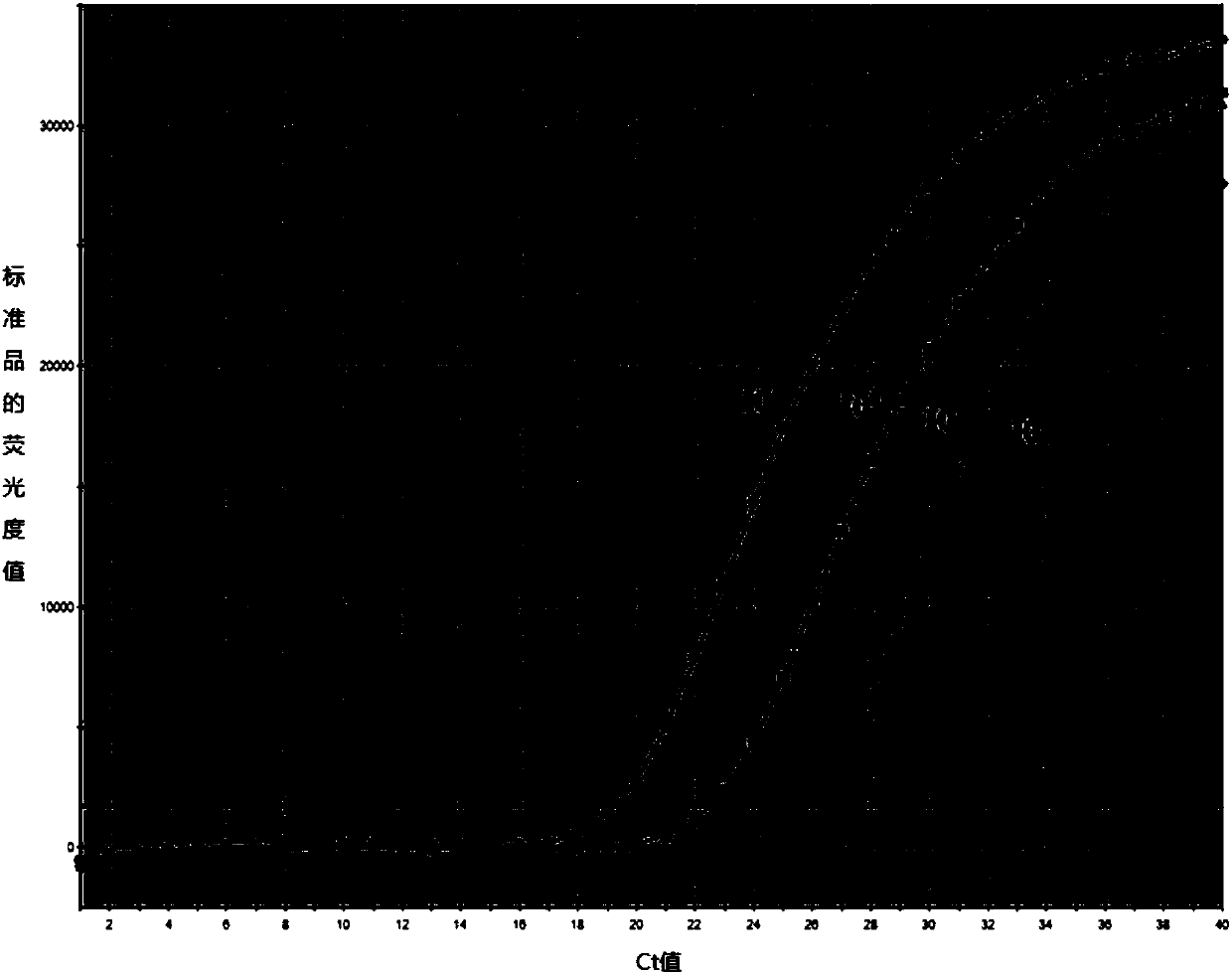RT-PCR quantitative detection method for hantavirus
A quantitative detection method, RT-PCR technology, applied in the direction of microorganism-based methods, microorganism measurement/inspection, biochemical equipment and methods, etc., can solve the problem of long separation period, low success rate, and difficult separation of Hantavirus and other problems, to achieve the effect of simple operation, low cost and short reaction time
- Summary
- Abstract
- Description
- Claims
- Application Information
AI Technical Summary
Problems solved by technology
Method used
Image
Examples
Embodiment 1
[0037] 1. Design of fluorescent quantitative PCR primers and probes:
[0038] A pair of PCR amplification primers and primer probes are designed according to the S gene sequence of Hantavirus 76-118 strain M14626, and the PCR amplification primers and primer probes are all synthesized by Shanghai Yingjun Biotechnology Co., Ltd., and the Hanta Virus 76-118 strain M14626 was obtained directly from Qingdao Center for Disease Control and Prevention. The upstream primer of the PCR amplification primer is shown in SEQ ID No.1, the downstream primer is shown in SEQ ID No.2, and the primer probe is shown in SEQ ID No.3.
[0039] 2. Extract RNA from COS-1 subcultured cells infected with Hantavirus 76-118 strain:
[0040] Take the subcultured cells and put them in a centrifuge tube after centrifugation, add 300 μl Trizol, then add 100 μl chloroform, oscillate on the mixer for 5 seconds or invert for 15 times; centrifuge at 13000 rpm for 15 minutes, absorb the upper layer, add an equal ...
PUM
 Login to View More
Login to View More Abstract
Description
Claims
Application Information
 Login to View More
Login to View More - R&D
- Intellectual Property
- Life Sciences
- Materials
- Tech Scout
- Unparalleled Data Quality
- Higher Quality Content
- 60% Fewer Hallucinations
Browse by: Latest US Patents, China's latest patents, Technical Efficacy Thesaurus, Application Domain, Technology Topic, Popular Technical Reports.
© 2025 PatSnap. All rights reserved.Legal|Privacy policy|Modern Slavery Act Transparency Statement|Sitemap|About US| Contact US: help@patsnap.com


